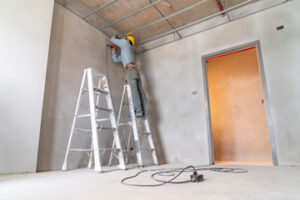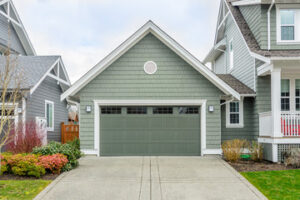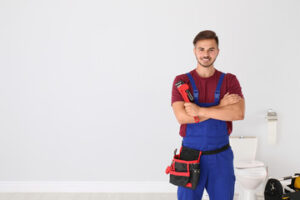Ceilings are a vital part of any building structure, providing insulation and soundproofing. However, they can be susceptible to a variety of issues that require prompt repair.

Water damage on the ceiling is a common issue that should be repaired as soon as possible. This will prevent further damage and minimize costly repairs in the future. For professional help, contact Ceiling Repair Perth.
As a homeowner, seeing cracks in your ceiling can be frightening and cause you to panic. However, it is essential to take the time to determine whether or not a crack is serious enough to warrant immediate action and if it is necessary for structural repair.
It is not uncommon for cracks to form in the walls and ceilings of your home. This is due to natural aging processes that occur as a house settles, shifts, and expands over the years. Often, these cracks are cosmetic and do not pose any immediate danger. However, ignoring these issues can lead to larger and more costly repairs down the road.
One of the most common causes of ceiling cracks is ground movement. This can be caused by earthquakes, landslides, or sinkholes. When this occurs, the foundation of a house may shift and create pressure on the structural elements of a building. If this pressure is great enough, it can cause cracking in the ceiling and other structural problems.
Another reason for ceiling cracks is water damage. If a ceiling has been damaged by a significant leak, it is important to have the issue addressed right away before it spreads and worsens. This can be done by a professional plumber, but it is essential to address the underlying problem in order to prevent further issues.
Finally, long cracks in the ceiling can be a serious indication of a problem with the structure of a house. When these cracks appear in the ceiling and match up with wall cracks, it is a good indication that there is a serious problem with the attic joists or roof trusses. When this is the case, it is necessary to get the problem fixed right away in order to avoid further damage and possible structural collapse.
A savvy homeowner can often patch up small cracks in the ceiling themselves with a bit of spackle and some paint. Larger cracks in the ceiling should be handled by a professional drywall and painting contractor that has experience working on this type of work.
Water Stains
If water stains appear on your ceiling, it’s important to address them quickly. They can indicate leaks, which can lead to structural damage and costly repairs. The first step is to identify the source of the water stain. Whether it’s caused by a roof leak, plumbing issue, or condensation buildup, addressing the cause of the problem will help prevent future occurrences of the stain.
Leaks in the ceiling are often hard to detect, since they can be hidden by insulation and other structural components. However, if the water stain is located in close proximity to a chimney, attic vent, skylight, or dormer, it’s likely that it’s coming from one of these features. After the leak is fixed, you can apply a stain-blocking primer to the area before repainting.
It’s also possible that the water stains are caused by condensation, which can happen when there’s insufficient ventilation in your home. Cooking, showering, and drying laundry without adequate air flow can contribute to moisture buildup. In these cases, it’s a good idea to install more fans in your home and use a dehumidifier to reduce humidity levels.
If you’re not comfortable removing or covering up the water stain on your ceiling, it may be best to call in a professional. A roofing expert can repair any damage to the ceiling, and a plumber or HVAC technician can fix the source of the leak.
Stains are unsightly, and they can even affect the resale value of your home. The best way to prevent water stains is to inspect your home on a regular basis, preferably once a month. This will allow you to catch leaks and other issues before they get out of hand. You can also try to minimize moisture buildup by insulating your attic and using a dehumidifier. If you notice a water stain on your ceiling, it’s critical to act quickly to prevent further damage and prevent the stain from spreading or becoming more severe.
Installation Issues
Ceilings can sustain many types of damage that require specialized repair solutions. Recognizing these issues and calling on a professional to handle them can help homeowners maintain the structural integrity of their living spaces.
A common problem is sagging ceilings. If left unchecked, this issue can compromise the entire structure of a home. Sagging ceilings may be caused by a number of issues, including improper installation or water damage. Often, this problem can be corrected by adding supports to the ceiling or replacing the damaged section.
If you notice that your ceiling is beginning to sag, it’s important to address the issue right away. This is because a sagging ceiling can lead to a number of serious problems, from mold growth to structural issues. Additionally, sagging ceilings are more difficult to paint and can cause drywall cracks.
Cracks in a ceiling can be quite dangerous and are typically caused by settling, temperature fluctuations, or structural problems. These cracks can quickly escalate into major repairs and compromise the overall stability of a home’s structure.
One of the biggest mistakes that people make when attempting to repair these cracks is using the wrong materials. It’s important to use high-quality drywall and joint compound for ceiling repairs, as these materials are designed to withstand the constant pressure of a ceiling. Choosing the wrong materials or applying the joint compound incorrectly can result in premature failure and costly repairs down the road.
Another common mistake that people make when repairing ceilings is neglecting to check for any water damage. If a leak goes undetected for too long, it can lead to serious damage to the insulation, wood framing, and other materials in the house. Additionally, a leaking ceiling can also cause stains and mold.
In addition to identifying and addressing any visible signs of damage, it’s crucial to understand the causes of these problems and how they can be prevented in the future. In addition to understanding the risks involved in working at a height, it’s also a good idea to work with a professional who can provide the appropriate tools and knowledge to prevent potential injuries.
Maintenance
Maintaining a well-kept ceiling is critical for both aesthetic appeal and structural integrity. While minor cleaning and touch-ups may be doable on your own, any significant damage or issues should be addressed by a professional contractor. Skilled contractors are able to recognise and address underlying issues that may not be visible from the surface, ensuring that your repairs will be effective for years to come. They also prioritise safety concerns, especially when working at heights and handling potentially dangerous materials. In addition, their expertise with a wide range of repair techniques ensures comprehensive solutions that withstand the test of time and environmental conditions.
A sagging or cracked ceiling is often indicative of structural problems, including weakened beams, rotted joists, and broken rafters. These issues must be addressed promptly to prevent collapse and other health hazards. A soft protrusion, a stain, or a damp spot on the ceiling may indicate water damage, which can lead to mold and other serious consequences if left unattended.
Identifying and addressing water damage in a ceiling is one of the most common maintenance issues that homeowners face. Stains and discoloration on the ceiling can be caused by a variety of factors, such as leaking pipes, heavy rains, or outdated paint. Inspect the ceiling regularly for water stains, and make sure to clean it using mild cleaners. If the ceiling is stained, it is recommended that you apply a stain-blocking primer before repainting the surface to ensure that the new paint will not bleed through.
Cracks in ceilings are often the result of settling or temperature fluctuations and can range from hairline cracks to larger fissures. To repair these cracks, fill the affected area with a spackling compound or patching plaster and allow it to dry before sanding and repainting. For larger areas, consider using a setting-type joint compound, which is easier to work with and dries faster than traditional drywall.
A properly maintained ceiling will enhance the beauty and value of your home or commercial property. By identifying and repairing common ceiling issues, such as sagging or water damage, you can keep your space looking great for years to come.


